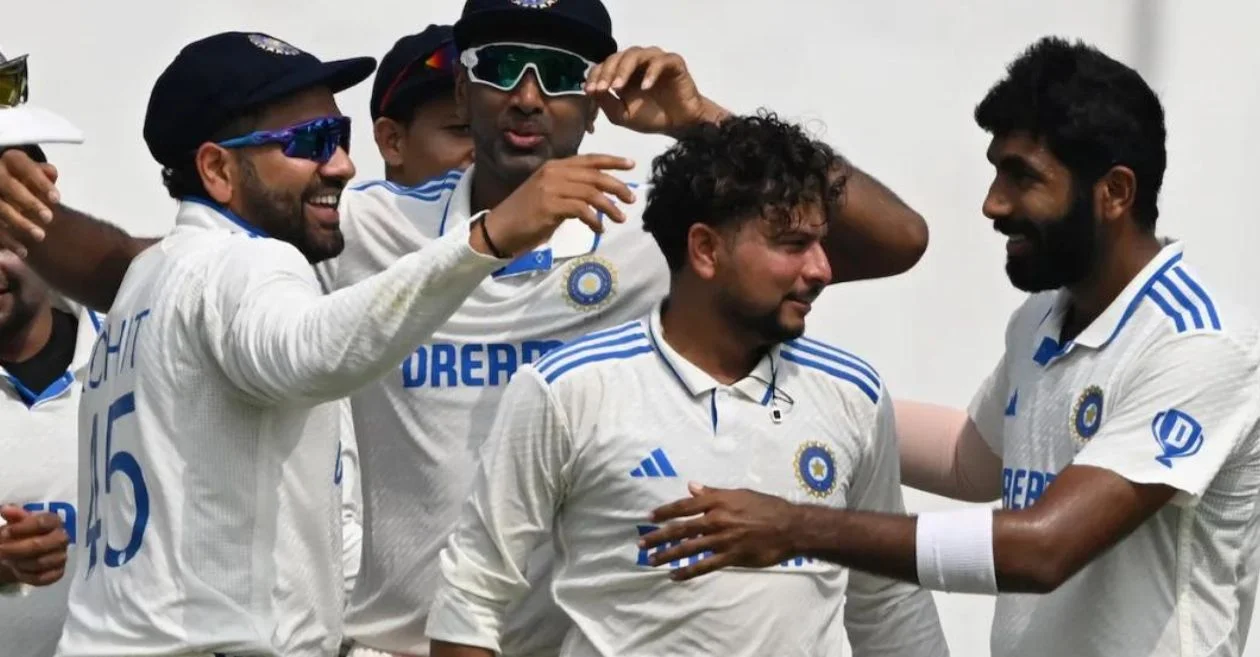Table of Contents
The upcoming third Test between India and England starting in Rajkot on February 15 holds immense significance, with the series deadlocked at 1-1. England’s impressive victory in Hyderabad was met with a spirited response from the Indian side in Visakhapatnam. However, the absence of key players like Virat Kohli has heightened the challenges for the hosts. The experienced batting order has grappled with consistency, and the pressure is on as England proves to be a resilient opponent, intensifying the battle for series supremacy.
Bowlers as game-changers
Despite the batting struggles, India found solace in the standout performances of their bowlers, securing a crucial win in the second Test. Now, as the series moves into the final three Tests, the bowlers will play a pivotal role in determining the fate of the series. With the onus on the bowling attack to deliver impactful performances, the Indian team aims to overcome the tough English challenge. The last three Tests are not just battles for victory but defining moments that will shape the narrative of the series and solidify the team’s position on home soil.
Also READ: IND vs ENG: Michael Vaughan identifies the biggest threat for England in the remainder of the Test series
India’s top-choice playing eleven for the last three Tests against England:
1. Rohit Sharma (c):
The experienced and prolific Rohit Sharma, leading the side, brings a wealth of cricketing wisdom. While recent scores might not reflect his full potential, his commanding presence at the crease and remarkable ability to convert starts into substantial innings make him the cornerstone of India’s batting lineup.
2. Yashasvi Jaiswal:
Yashasvi Jaiswal, the young and dynamic opener, has recently showcased his extraordinary talent with a stellar double century in the second Test. His aggressive yet technically sound batting style makes him a potential game-changer at the top order, instilling fear in the opposition’s bowling attack.
3. Shubman Gill:
Shubman Gill, despite initial struggles, demonstrated his class with a much-needed century in the last innings of the second Test. His elegant strokeplay, temperament, and ability to handle pace and spin underline his importance as a top-order batter capable of steering India to commanding positions.
4. Rajat Patidar:
Making his debut, Rajat Patidar exhibited promising signs, showcasing a solid technique and the potential to anchor the middle order. While the runs might not have flowed abundantly, his composure and shot selection hint at a batter capable of weathering tough situations and building crucial partnerships.
5. Sarfaraz Khan:
Sarfaraz Khan, known for his aggressive batting style and ability to accelerate the scoring in the domestic circuit, adds firepower to the middle order. With the potential to play both anchor and aggressor, Sarfaraz brings versatility to the batting lineup.
6. Dhruv Jurel (wk):
Dhruv Jurel could likely to play the designated wicketkeeper and lower-order batter after the recent struggle of KS Bharat. Known for his agile wicketkeeping skills and ability to handle pressure situations, Jurel brings depth to the squad. His contributions with the bat in critical moments make him a valuable asset.
7. Ravichandran Ashwin:
Ravichandran Ashwin, the seasoned off-spinner and lower-order batter, continues to be a linchpin in India’s Test squad. His ability to extract turn and bounce from the most placid pitches, coupled with his all-round skills, makes him a constant threat to the opposition. As a thinking cricketer, Ashwin’s contributions often go beyond traditional bowling roles.
8. Axar Patel:
Axar Patel, the left-arm spinner, has carved a niche for himself with his accuracy and subtle variations. His knack for taking crucial wickets in tandem with Ashwin adds a potent spin duo to the Indian bowling attack. Patel’s ability to contain and break partnerships makes him a crucial component, especially in the latter stages of a Test match.
9. Kuldeep Yadav:
Kuldeep Yadav, the left-arm wrist-spinner, brings a unique dimension to India’s spin arsenal. His ability to turn the ball both ways and deceive batters in the air makes him a genuine wicket-taking option. While opportunities might have been sporadic, Yadav’s skill set remains a valuable asset, particularly in conditions conducive to spin.
10. Mohammed Siraj:
Mohammed Siraj‘s emergence as a pace spearhead adds a refreshing dynamism to India’s fast-bowling department. His ability to generate pace and extract movement, combined with relentless accuracy, makes him a potent force. Siraj’s breakthrough performances earlier on the home conditions have added a new dimension to India’s pace battery, contributing significantly to the team’s success.
11. Jasprit Bumrah (vc):
Jasprit Bumrah, the vice-captain and pace spearhead, continues to be a linchpin in India’s bowling attack. Known for his unconventional action and the ability to generate pace with pinpoint accuracy, Bumrah poses a constant threat to batters across formats. His knack for breaking partnerships and providing crucial breakthroughs makes him a key asset in Test matches, particularly in challenging conditions.
